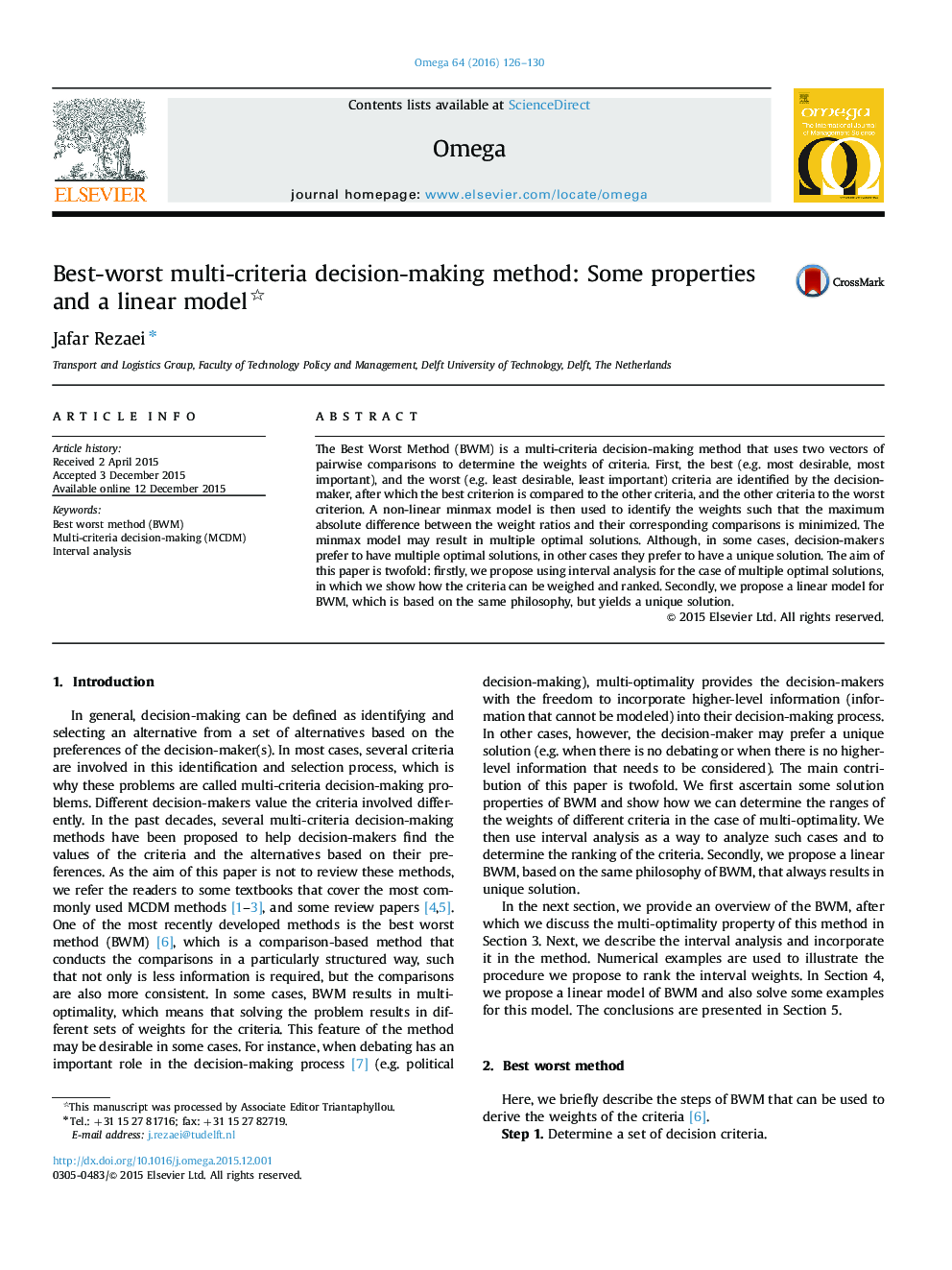| کد مقاله | کد نشریه | سال انتشار | مقاله انگلیسی | نسخه تمام متن |
|---|---|---|---|---|
| 1032359 | 1483664 | 2016 | 5 صفحه PDF | دانلود رایگان |
• Interval analysis is used to analyze the multi-optimality of BWM.
• Multi-optimality of BWM is an advantage when debating has a role in decision-making.
• A linear BWM model is proposed.
• The linear BWM model results in a unique solution.
The Best Worst Method (BWM) is a multi-criteria decision-making method that uses two vectors of pairwise comparisons to determine the weights of criteria. First, the best (e.g. most desirable, most important), and the worst (e.g. least desirable, least important) criteria are identified by the decision-maker, after which the best criterion is compared to the other criteria, and the other criteria to the worst criterion. A non-linear minmax model is then used to identify the weights such that the maximum absolute difference between the weight ratios and their corresponding comparisons is minimized. The minmax model may result in multiple optimal solutions. Although, in some cases, decision-makers prefer to have multiple optimal solutions, in other cases they prefer to have a unique solution. The aim of this paper is twofold: firstly, we propose using interval analysis for the case of multiple optimal solutions, in which we show how the criteria can be weighed and ranked. Secondly, we propose a linear model for BWM, which is based on the same philosophy, but yields a unique solution.
Journal: Omega - Volume 64, October 2016, Pages 126–130
